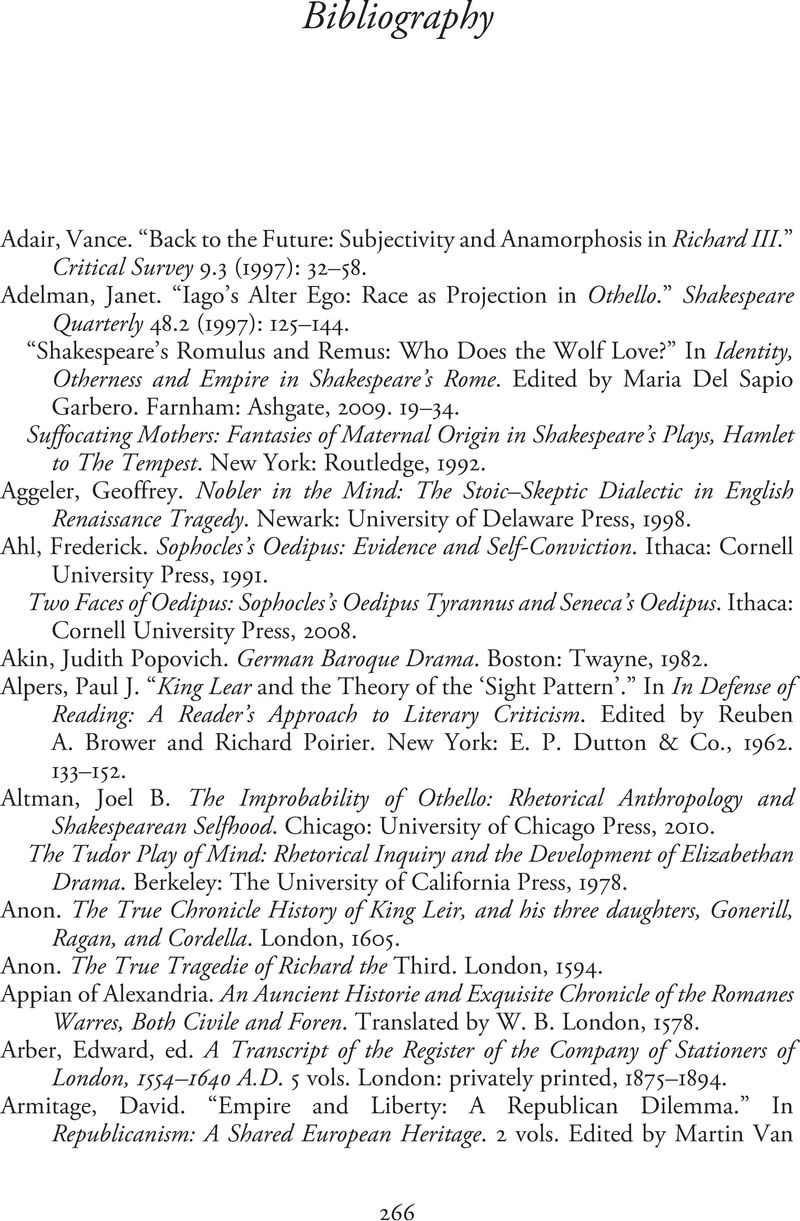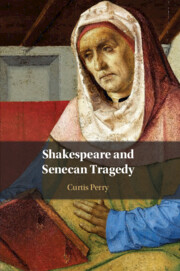Book contents
- Shakespeare and Senecan Tragedy
- Shakespeare and Senecan Tragedy
- Copyright page
- Contents
- Acknowledgments
- Note on Texts
- Chapter 1 Shakespeare and the Resources of Senecan Tragedy
- Chapter 2 Richard III as Senecan History
- Chapter 3 Seneca and the Modernity of Hamlet
- Chapter 4 Seneca and the Antisocial in King Lear
- Chapter 5 Republican Coriolanus and Imperial Seneca
- Chapter 6 Seneca, Titus, and Imperial Globalization
- Chapter 7 Senecan Othello and the Republic of Venice
- Bibliography
- Index
- References
Bibliography
Published online by Cambridge University Press: 06 October 2020
- Shakespeare and Senecan Tragedy
- Shakespeare and Senecan Tragedy
- Copyright page
- Contents
- Acknowledgments
- Note on Texts
- Chapter 1 Shakespeare and the Resources of Senecan Tragedy
- Chapter 2 Richard III as Senecan History
- Chapter 3 Seneca and the Modernity of Hamlet
- Chapter 4 Seneca and the Antisocial in King Lear
- Chapter 5 Republican Coriolanus and Imperial Seneca
- Chapter 6 Seneca, Titus, and Imperial Globalization
- Chapter 7 Senecan Othello and the Republic of Venice
- Bibliography
- Index
- References
Summary

- Type
- Chapter
- Information
- Shakespeare and Senecan Tragedy , pp. 266 - 288Publisher: Cambridge University PressPrint publication year: 2020

